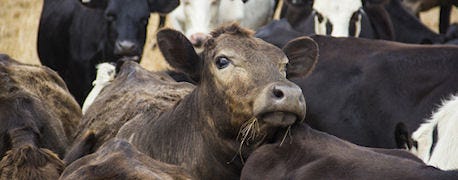April 27, 2015

What is the best feedlot windbreak design?
Jim Krantz, South Dakota State University Extension specialist, Mitchell, S.D., says that research and experience show that the most effective design is 75-80% solid.
Related: Sorting Feedlot Cattle By Temperament Could Be Valuable Management Strategy
This slatted effect does allow wind penetration and air flow-through, Krantz says, but it also prevents much of the downdraft and swirling effect that is associated with solid windbreak construction.
A 12-foot high windbreak fence would be expected to provide wind protection up to 200 feet away. Steel panels or rough lumber are both considered accepted materials for construction.

Slatted design for a good feedlot windbreak allows some wind penetration, but prevents much of the downdraft and swirling associated with solid fences.
Windbreak fences provide more flexibility and are more adaptable for existing fences and mounds in the lots. Those constructed on mounds are extremely versatile as they provide protection for cattle regardless of wind direction. They are normally oriented in a northeast to southwest direction.
Reducing cattle exposure to winds that accompany cold weather will reduce feed costs and improve efficiency, Krantz says, as cattle utilize feed intake for performance instead of increased maintenance requirements cause by wind chill.
Related: E. coli vaccine works, but is rarely used in feedlot cattle
Studies from Montana indicated that during severe winters, cattle in feedlots protected from the wind gained 10 or more pounds than cattle in non-protected lots. During milder winters, sheltered lots showed performance advantages of about 3.5 pounds.
As a rule of thumb, a 20 mile per hour wind is considered equivalent to an extra 30 degrees of cold.
For more information, see a North Dakota State University document on winter feedlot managment.
Source: SDSU
This story was updated in April, 2015.
You May Also Like




